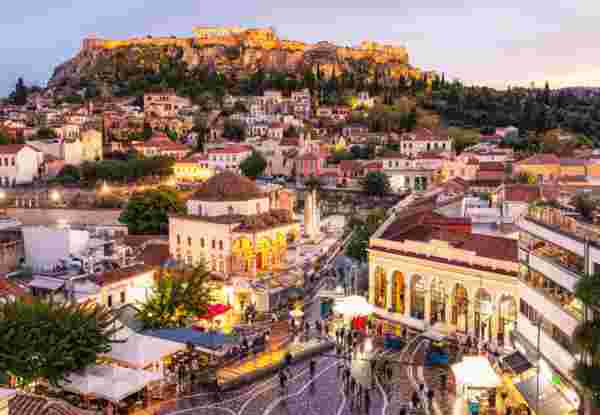The May Day wreath tradition in ancient Greece

Origin of “May”
The name of May, or Maios in Greek (Μάιος), originates from the ancient goddess Maia (in Greek Μαία) and is a reborrowing from Latin. According to Greek mythology, Maia was one of the Pleiades and the mother of Hermes by Zeus. Daughter of Atlas and Pleione the Oceanid, she was the oldest of the seven Pleiades. In later antiquity and as ancient Roman religion and myth took over, Maia embodied the concept of growth as her name was related to the comparative adjective maius, maior – which means “larger, greater” in Latin.
Celebration of May First
In ancient Greece, the first day of May was called Maios (Πρωτομαγιά, or Protomagia in modern Greek). It celebrated the final victory of summer over winter and life over death. The celebration was similar to an ancient ritual associated with another minor god called Adonis, which also celebrated nature’s revival.
Celebration of Spring
The celebration of spring in ancient times was associated with an annual festival, called the Anthesteria, dedicated to Demeter (the goddess of agriculture) and her daughter, Persephone. Persephone emerged each year at the end of winter from the underworld. The Anthesteria was a festival of souls, plants, and flowers. Therefore, it was associated with rebirth and renewal. The coming of Persephone marked the rebirth of nature, a common theme in all these traditions.
May Day Wreath Tradition
The May Day tradition of the wreath and its association with the Thargelia festival may have originated in ancient Greece. The Thargelia was a spring celebration in honor of Apollo and Artemis. Apollo and Artemis were the gods of fertility and vegetation. During this time, people offered the first fruits from the earth to appease them from ruining the harvest with excessive heat or pestilence. They create a wreath using twigs from fruit-bearing trees such as fig trees, almond trees, or peach trees.
Modern May Day Celebrations
The most common aspect of modern May Day celebrations is the preparation of a flower wreath from wildflowers. In addition to this tradition, there is an increasing trend for people to buy their wreaths in flower shops. They place flowers on the wreath against a background of green leaves and they hang them either on the entrance to the family house/apartment or a balcony. It remains there until midsummer night when they burn it during the St John’s bonfires. People leap over the flames consuming the flower wreaths.
Greece Insiders May Blog Articles
The Five Greek Islands in the Cyclades to visit in May
Feeling Ready?
From our blog

Visiting Athens with Kids: A helpful Guide
READ MORE
Paros for Seniors: Tips and Itinerary
READ MORE
Best Resorts in Greece for Families: Your Ultimate 2025 Guide
READ MORE
How to Enjoy Santorini for Seniors
READ MORE
Honeymoon in Paros Island
READ MORE
Rome Travel Guide: What to Do, When to go and Where to Go
READ MORE
The Best Greek Islands for Couples, According to a Luxury DMC
READ MORE
Discover Milan: Top Attractions
READ MORE
Athens in February Travel Guide
READ MORE



